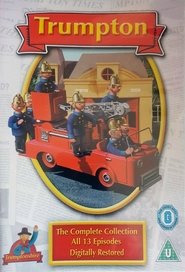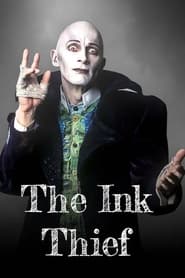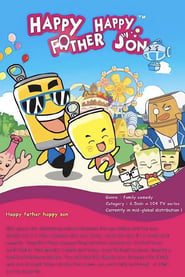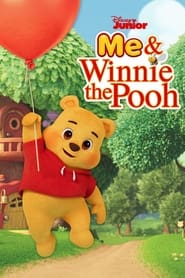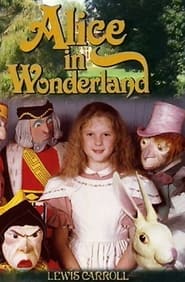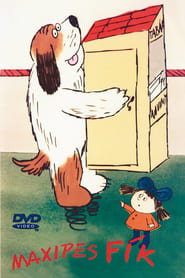Popular Kids TV Shows on Pantaflix - Page 161
-
Mach and Sebestova
1976
-
Trumpton
1967
Trumpton
1967
star 7.8Trumpton is a stop-motion children's television show from the producers of Camberwick Green. First shown on the BBC in the 1960s, It was the second series in the Trumptonshire Trilogy, which comprised Camberwick Green, Trumpton, and Chigley. Trumpton was narrated by Brian Cant, animation was by Bob Bura, John Hardwick and Pasquale Ferrari. Scripts are by Alison Prince; all other production details were identical to Camberwick Green. -
Genius Junior
2018
Genius Junior
2018
No stranger to young geniuses, Neil Patrick Harris hosts this exciting game show that celebrates the smartest kids in America. Twelve teams of the most incredible children in the country, ages 8-12, will take the stage to compete in a series of increasingly complex quizzes with the goal of being crowned Genius Junior. -
The Ink Thief
1994
The Ink Thief
1994
The Ink Thief steals the power of children's imaginations by taking the ink from drawings and pulling two young children into his world inhabited by Oobs and other creatures of imagination. The Ink Thief was a 1994 British children's TV show, shown on the ITV channel during their CITV segment. It starred Richard O'Brien and Toyah Wilcox. The series was produced by Animus Entertainment for Tyne Tees Television. -
Harlem Globetrotters: Play It Forward
2022
star 1The world-famous Harlem Globetrotters showcase their talents on and off the court as players share their personal inspirations and interests. -
Me & Winnie the Pooh
2023
-
WellieWishers
2016
WellieWishers
2016
Join the WellieWishers as they imagine, sing, dream and discover just what it takes to be kind. When the WellieWishers step into their colorful garden boots, they’re ready for anything – stomping in muddy puddles, dancing with fireflies and navigating the ins and outs of friendship through play and imagination. -
Alice in Wonderland
1985
Alice in Wonderland
1985
Anglia Television's 5 episode adaption of Lewis Caroll's Alice in Wonderland was inspired and based upon an early production put on by the famous Da Silva Puppets group at the Norwich Puppet Theatre. -
宝宝巴士奇妙学古诗
2021
宝宝巴士奇妙学古诗
2021
-
Z-Squad
2006
Z-Squad
2006
star 9The adventures of three ordinary school girls turned superheroines and their newfound, cuddly alien counterparts, the Zoots, as they search for enchanted crystals to save the Earth and Z-Nation from a cast of bumbling baddies. -
Maxipes Fík
1976
-
Fleabag Monkeyface
2011
Fleabag Monkeyface
2011
star 8.5This animated series, based on the series of books by Knife and Packer, follows the adventures of the eponymous hero and his two creators, best friends Gene and Gerald, as they report on all things grotesque on their TV show Gross-Out TV, and face off against the evil Dr. Dirk Spamflex and his dastardly machinations. -
Monster High: Webisodes
2022
star 7The adventures of Clawdeen, Frankie and Draculaura at Monster High continue in this 2D-animated YouTube series features the voice talent behind the linear series and offers fans even more of the beloved characters and world. -
Fancy Nancy: Fancy It Yourself
2019
star 6Ooh La La! It's Fancy Nancy! Follow Nancy as she guides everyone on how to add a little more Fancy to anything that's ordinary. -
Doctor Who: Scream of the Shalka
2003
star 6.6The Doctor, a time-traveling alien explorer, is sent by his people, the Time Lords, to liberate a small town in England from the tyrannical rule of a race of alien lava creatures called the Shalka. -
超能钢小侠
2022
超能钢小侠
2022
 Netflix
Netflix
 Amazon Prime Video
Amazon Prime Video
 Apple iTunes
Apple iTunes
 Apple TV Plus
Apple TV Plus
 Disney Plus
Disney Plus
 Google Play Movies
Google Play Movies
 Paramount Plus
Paramount Plus
 Hulu
Hulu
 HBO Max
HBO Max
 YouTube
YouTube
 fuboTV
fuboTV
 Peacock
Peacock
 Peacock Premium
Peacock Premium
 Amazon Video
Amazon Video
 The Roku Channel
The Roku Channel
 AMC+
AMC+
 Kocowa
Kocowa
 Hoopla
Hoopla
 The CW
The CW
 Vudu
Vudu
 Starz
Starz
 Showtime
Showtime
 PBS
PBS
 Pantaflix
Pantaflix
 FXNow
FXNow
 Tubi TV
Tubi TV
 Kanopy
Kanopy
 Comedy Central
Comedy Central
 Crunchyroll
Crunchyroll
 Microsoft Store
Microsoft Store
 Redbox
Redbox
 Sun Nxt
Sun Nxt
 ABC
ABC
 DIRECTV
DIRECTV
 Crackle
Crackle
 Fandor
Fandor
 Plex
Plex

